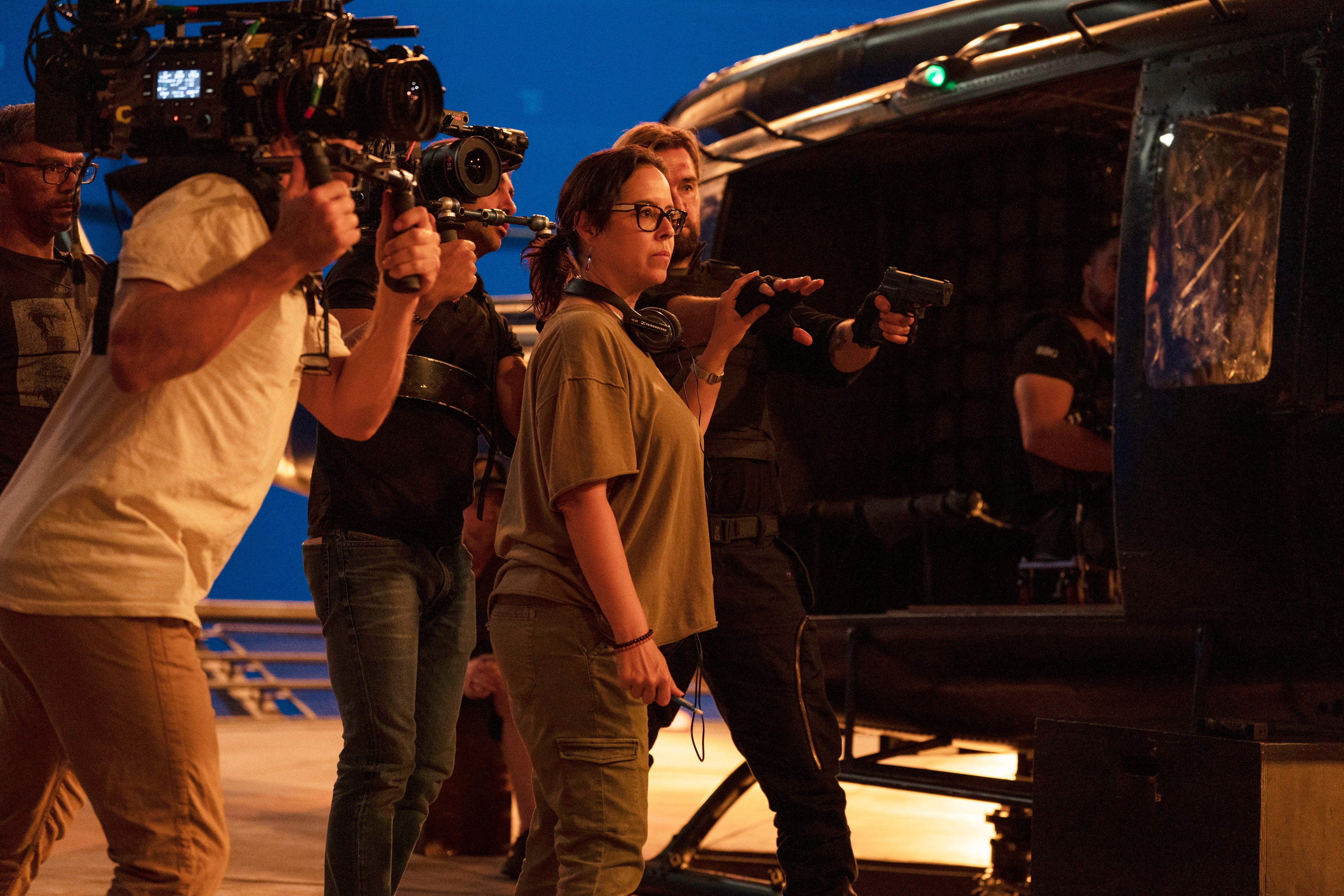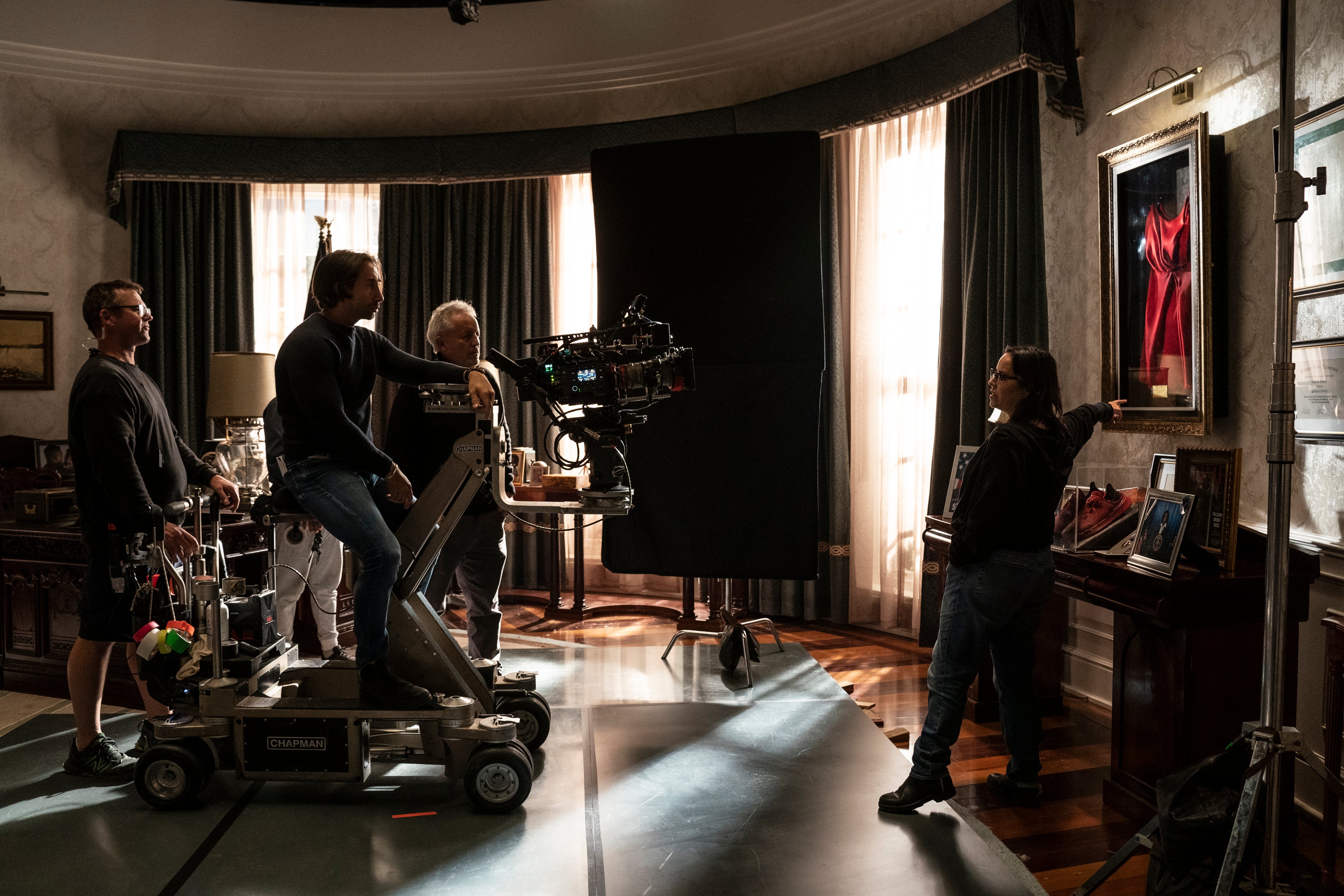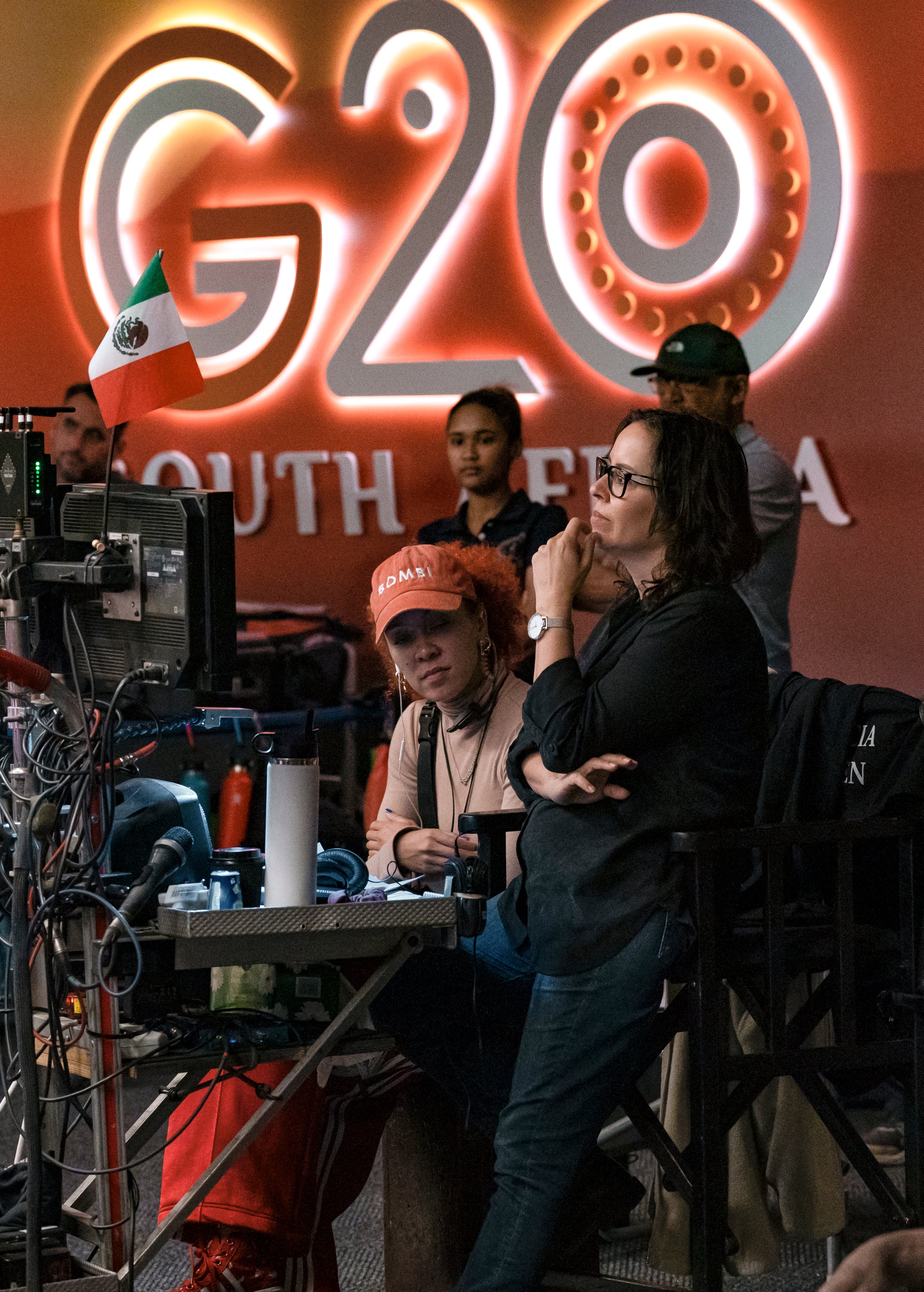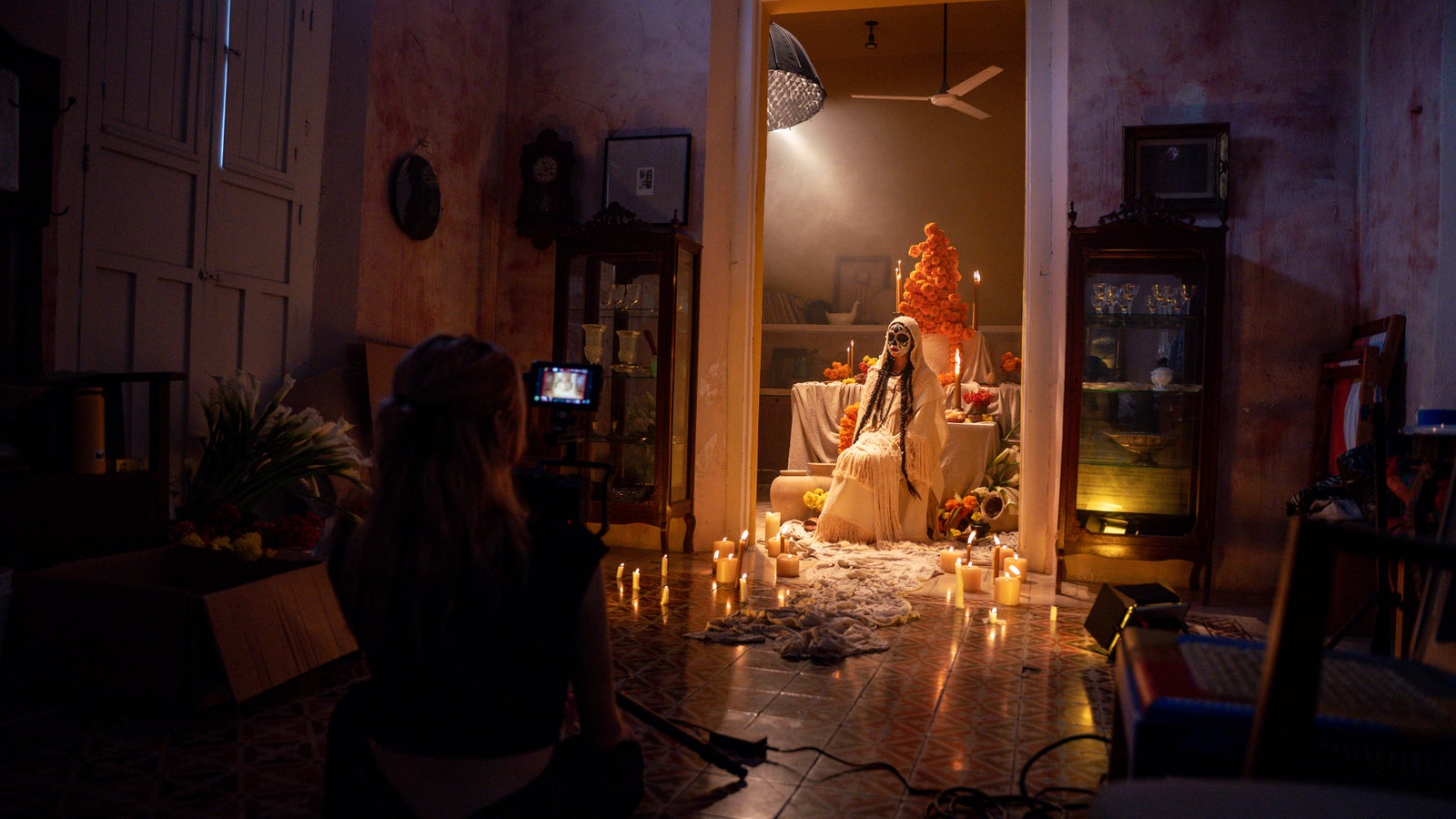
05-06-2025 - Filmmaker Interviews
DP Checco Varese, ASC, Utilizes the Sony Cinema Line to Craft an Action Spectacle on G20
By: Yaroslav Altunin
Action movies are pure cinema. They entertain and excite not only audience members but the craftsmen who build them. From daring stunt sequences to explosions, gunfights, and touching moments, making action films demands a balance between cinematic expertise and artistry.
G20, an action film starring Viola Davis and directed by Patricia Riggen for Amazon Prime, demanded that and much more from its creative team. Captured by Emmy award-winning Director of Photography Checco Varese ASC, the film brought together almost the full range of the Sony Cinema Line.
Shot primarily on the Sony VENICE 2, Varese and his team utilized the Sony FX3, FX6, FR7, and even the RX0 action camera.
Sony Cine sat down with Varese to learn more about his unique approach to capturing the film, how his creative choices impacted the visual language, and how the Sony Cinema Line helped bring it all together.
Filmmaker Interview: Capturing G20 on The Sony Cinema Line
G20 follows the exploits of US President Danielle Sutton, played by Viola Davis, during the G20 Summit of world leaders in Cape Town, South Africa. When mysterious mercenaries with deadly motives attack and take hostages, it's up to the President to save the day, and her family.
"That was the inspiration. You know, Die Hard, Air Force One, it's an entertainment movie." Varese said. "It's a movie to have fun and enjoy."
And Varese is no stranger to entertainment. A veteran of the industry, the cinematographer started his storied career lensing music videos for the Dave Matthews Band. Now with over 60 credits to his name, such as Hulu's Dopesick, Reign for the CW, It: Chapter Two, and Tom Clancy's Jack Ryan for Prime Video, Varese was the perfect fit to bring cinematic expertise and artistry to G20.
Leaning on the motifs of 90s action films, the film pulls no punches with intense action and explosions, yet the foundation of this film came from a longtime collaboration between Varese and Riggen.
"First of all, Patricia is a very versatile director. She's done The 33, she's done Miracles from Heaven, and she's done a musical," Varese said. "So, for her, doing an action movie was an interesting challenge."

It was on Tom Clancy's Jack Ryan that Varese and Riggen further set the stage for exploring action movie themes in G20. The duo had done almost a dozen projects together and already had an established shorthand that helped keep the project steady amid industry strikes.
"What Patricia does brilliantly is she blocks the scene in a way that makes sense to the audience and makes sense to the actors," Varese said. "But it also makes sense to the camera."
In order to bring this blocking to life, Varese utilized a myriad of Sony cinema cameras. In his toolkit, the cinematographer had a pair of Sony VENICE 2s, one with a 6K image sensor and another with an 8K image sensor. Sony FX3s were used for action and POV shots, while an FX6 was utilized for drone work, leaving the Sony FR7 to mimic the footage from security cameras. The cinematographer also used the Sony RX0 action camera for select shots.
"I was a news cameraman for 14 years, so my training comes from operating the camera," Varese shared. "I think about what the audience needs to see and how to understand the scene. So, it all distills into this dialog between the script, the director, and the cinematographer."
"We had, like, seven different types of Sony cameras," Varese added. "[Even] the bad guy that is the journalist has a Sony FS7."
Between scenes inside a limousine, an elevator, and a cramped kitchen, there was no shortage of locations fit for cramped fight scenes. In these instances, Varese leaned heavily on the FX3 and its stabilized sensor to capture the intense action.
"The FX3 was fantastic for the small spaces," Varese said. "[First Unit] had two FX3s with Sony E-mount lenses, which are great because, for quick cuts and action units, you just run around with a camera that is the size of a football. All those fight scenes were shot on that compact camera."
"There was one shot that we did where I literally put a piece of Duvetyne on the ground and pushed the camera with a stick. You couldn't do that with a VENICE, but with the FX3, it was perfect."
For drone work, Varese needed a camera that would match the VENICE 2 and FX3 that he was already using but was compact enough to maintain a small footprint and have a sensor that could easily fit into a drone workflow. Not wanting to use a dedicated drone and camera system, the cinematographer chose the FX6 due to its lightweight design but also because of its non-stabilized sensor.
"The FX6 was for the drones. There were also some shots that required a lot of VFX, so I wanted the FX6 for that," Varese said. "The FX3 is not happy with drones because of the stabilized sensor."
"We needed something more agile. So, the FX6 was a perfect camera for that. And VFX also got six FX6s for [background] plates."

Filmmaker Interview: The Seamless Transitions between the Sony Cinema Line
Bringing so many cameras together on one project wasn't a requirement for G20. It was a dedicated choice by a veteran craftsman who wanted every shot to make sense to the audience, the actors, and the camera. With the Sony VENICE 2 and the other cameras of the Sony Cinema Line, Varese had an expansive palette and set of brushes to work with.
"There is a family of cameras that have the same [size] sensor — the Sony VENICE 2 with the 8K and the VENICE with the 6K, and then the FX3 and the FX6 — The more tools I have, the easier it becomes for me to make a choice. The more tools we have, the better the language is.
"It's like a painter. You have a big brush, and a small brush, and a tiny brush, and a bigger brush. You don't limit yourself to a roller [because] you have 20 different tools."
Having such an array of cameras for G20 allowed Varese and his team more freedom on set. Because all the cameras they chose lived in the same ecosystem, switching between them was never an obstacle.
"It doesn't get more complicated. It gets easier," Varese explained. "All of a sudden, you have a camera system where you tell [your AC], 'Okay, the next three shots are with the VENICE, but get the FX3 ready because I know as soon as I'm done with this [we'll switch].’ So the transition is seamless."
As Varese inches closer to his 70th credit as Director of Photography, he won't always need the entirety of the Sony Cinema Line. However, knowing that those tools are there to meet the needs of his current project allows him to focus on creative decisions instead of overcoming obstacles.
"Each canvas is different, and each movie is different," Varese said. "You have to have the tools for each canvas. That is very important. And Sony has done a really good job in the last few years to give me all the tools I need."
G20 is now available to stream on Amazon Prime Video. To learn more about the Sony Cinema Line and its future updates, visit the link here.






